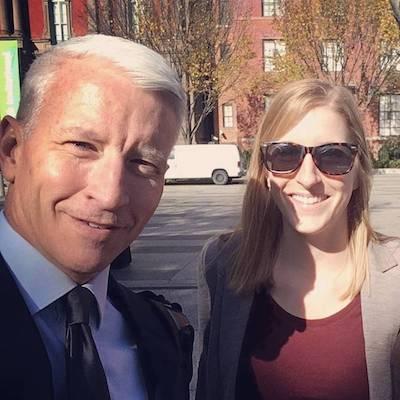Notes from the Lab: Meet the ARAC Superbug-Fighting Team
April 2017
Often found peering at petri dishes in our state-of-the-art lab, the Antibiotic Resistance Action Center’s research team is leading the way on several groundbreaking studies. From tracking how eating contaminated chicken can cause drug-resistant urinary tract infections to gauging if the human microbiome can protect people from dangerous pathogens, their research is grounded in finding real world data on and solutions to antibiotic resistance, one of the most pressing public health crises today.
Dr. Lance Price
Dr. Lance Price is ARAC’s director and a professor at the Milken Institute School of Public Health. Dr. Price is pioneering the use of genomic epidemiology to understand how the misuse of antibiotics in food animals affects public health. By analyzing the genomes of bacteria found in humans, food, livestock, and environments near food-animal production sites, Dr. Price and his colleagues have traced new strains of antibiotic-resistant pathogens to industrial livestock operations.
- What's your favorite lab tool?
The Vortex Mixer — vibration AND shaking — what more could you ask for?
- If you were a bacterium, which would you be?
E coli — so I can lead a double life — kind of like Jekyll and Hyde.
- Who is your microbiology hero?
Alexander Fleming for turning bad lab techniques into the discovery of the century.
Dr. Cindy Liu
Dr. Cindy Liu is ARAC’s Chief Medical Officer and co-directs lab research. Her research focuses on human microbial ecology, where she hopes to advance our understanding of the inner workings of microbial communities that live in and on the human body and in the environment. Dr. Liu’s innovative research resulted in her receiving the 2016 American Society for Microbiology ICAAC Young Investigator Award, which recognizes early career scientists for research excellence and potential in microbiology and infectious disease.
-
What's your favorite lab tool?
Actually, it's boring because my favorite lab tool is anything that collects and produces high quality samples and DNA. This is probably the most important part of any research we do. -
If you were a bacterium, which would you be?
Dolosigranulum, it's a lactic acid-producing bacteria that lives in the nose, and we found interesting relationship between this bacterium and Staphylococcus aureus, so I am fascinated by them. -
Who is your microbiology hero?
I feel that anyone who has overcome skepticism and hardships and made contributions to the field of microbiology is my hero. But good examples of this would be Barbara McClintock on transposons, Stanley Pruisiner on prions, and Barry J. Marshall and J. Robin Warren on H. pylori. It took both brains and guts to convince the scientific community of their paradigm-shifting findings. I admire that a lot.
Remy Hilsabeck
Remy Hilsabeck is our senior research associate and lab manager. She uses microbiological, molecular, and epidemiological techniques to follow infectious disease trends affecting public health. This work focuses on various pathogens including Human Immunodeficiency Virus (HIV), Escherichia coli (E. coli), as well as both antibiotic resistant and antibiotic susceptible Staphylococcus aureus (e.g. MRSA and MSSA).
- What's your favorite lab tool?
The micropipette - this allows us to work with the tiny amounts of sample that makes it possible to conduct our molecular research. Also, who doesn’t love the click from the tips???
- If you were a bacterium, which would you be?
Coxiella burnetii - this bacterium falls into a scary category of being highly infectious, meaning inhalation of just one single C. burnetii organism is enough to cause infection - the same as Ebola virus! In comparison, Staphylococcus aureus requires approximately 100,000 organisms to cause infection.
- Who is your microbiology hero?
LOTS...here are a few: Louis Pasteur for his groundbreaking fundamental research; Rosalind Franklin for her (until recently) unrecognized work on discovering the double-helix structure of DNA; Henrietta Lacks for her amazing contribution to science - although highly controversial in its acquirement, her HeLa cell line has been instrumental in many of our most prominent health/science discoveries and cures.
Pei-ying Chang
Pei-ying Chang is a graduate research assistant and is currently pursuing a Master's in Public Health in Environmental Health Science and Policy at the Milken Institute School of Public Health at George Washington University. She graduated from the University of Georgia with a B.S. in Biology with a concentration in music.
- What's your favorite lab tool?
Pipette Gun. It attaches to a serological pipet and draws/dispenses liquid using electricity. I like it because it's a huge step forward from when people used to use their mouths and a tube to pipet.
- If you were a bacterium, which would you be?
Methanogens that live in your gut and make farts.
- Who is your microbiology hero?
Antonie van Leeuwenhoek aka “Father of Microbiology” was the first to look at microbes under a microscope when the idea of tiny organisms was still crazy.
Kelsey Roach
Kelsey Roach is a research assistant and is currently pursuing a Master's in Public Health Microbiology and Emerging Infectious Diseases at the Milken Institute School of Public Health at George Washington University. She received her Bachelor's from the University of New Hampshire in Biomedical Science with a focus on Medical Microbiology.
- What's your favorite lab tool?
The autoclave (when it works) because I like making agar plates.
- If you were a bacterium, which would you be?
Lactobacillus so I could dedicate my life to making cheese and yogurt.
- Who is your microbiology hero?
Bergey for his excellent manual.






